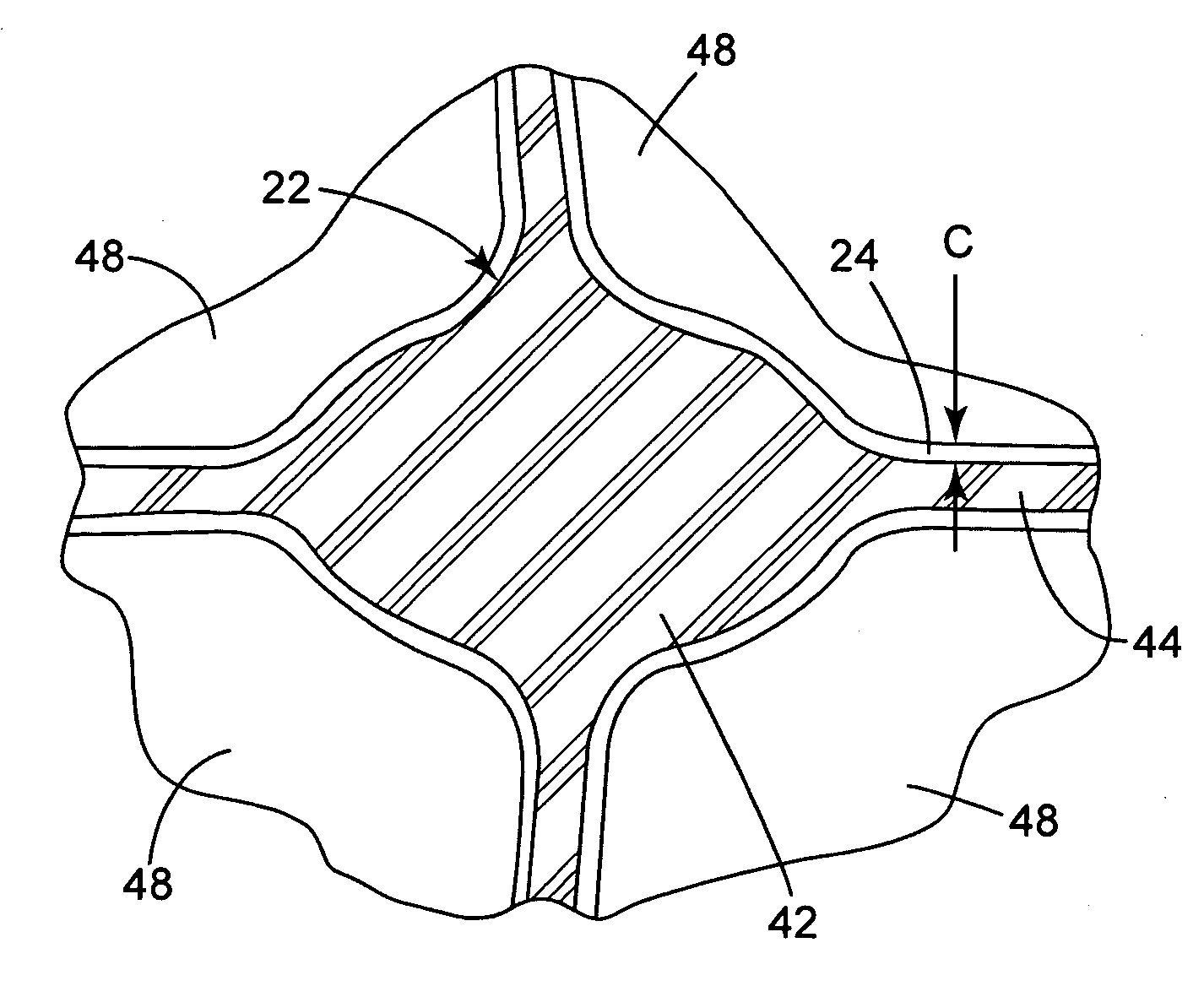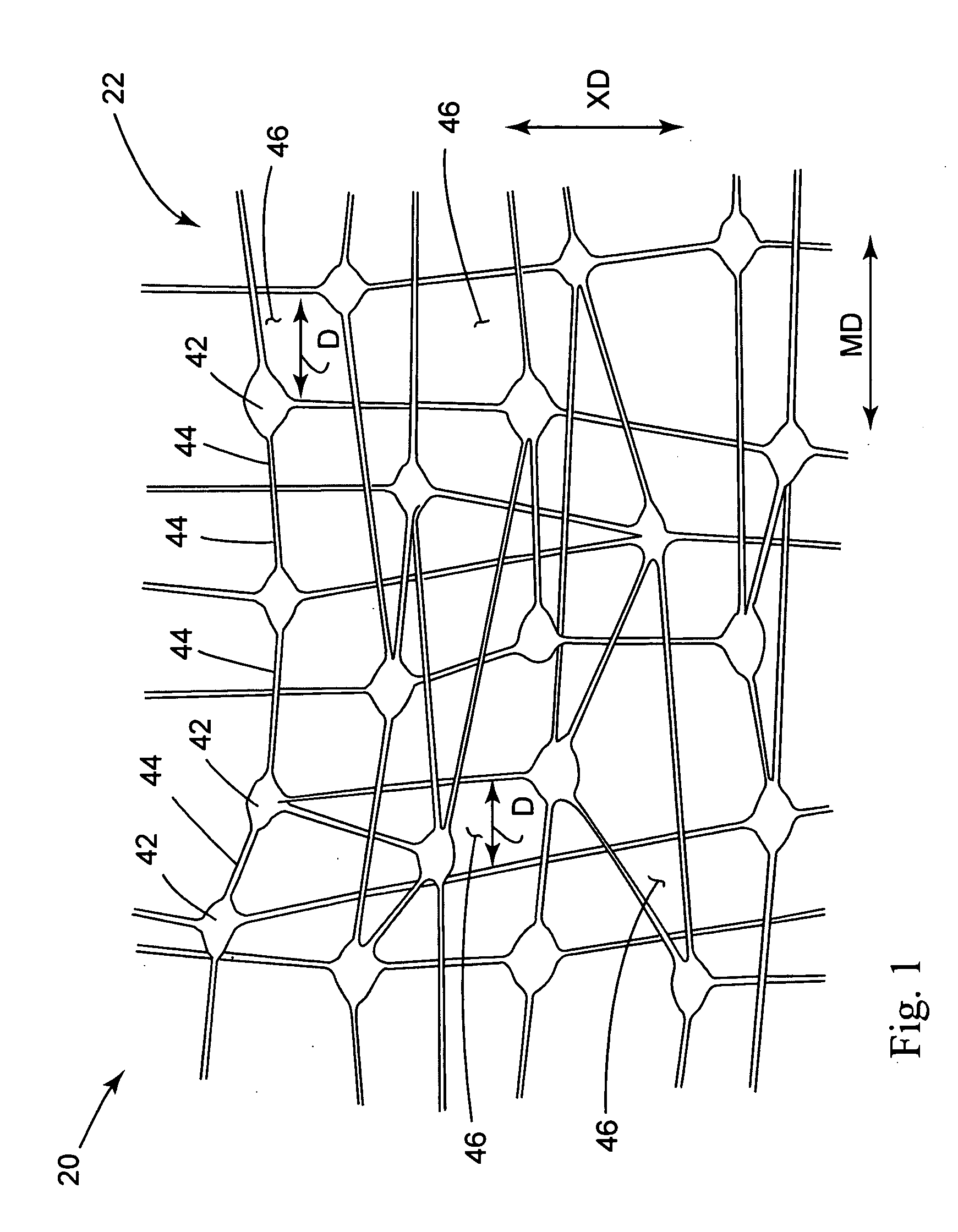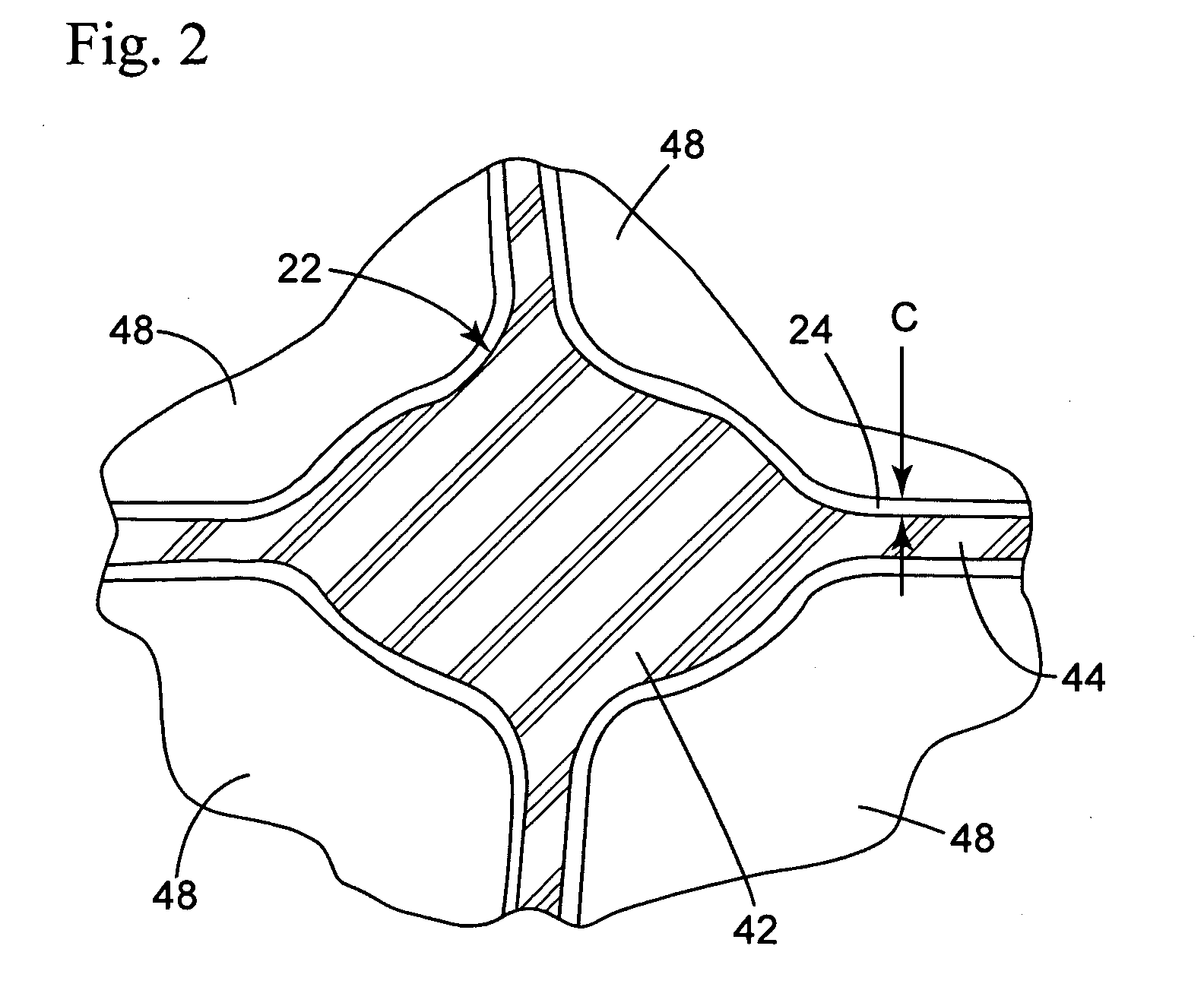Composite membrane and method for making
a porous membrane and composite technology, applied in the field of composite porous membranes, can solve the problems of membrane defects, inability to meet the ion exchange material of inert hydrophobic base membranes,
- Summary
- Abstract
- Description
- Claims
- Application Information
AI Technical Summary
Benefits of technology
Problems solved by technology
Method used
Image
Examples
example 1
[0100]An ePTFE membrane with dimensions of about 12″ by 12″ and a thickness of 0.003 in. was uniformly coated with a modified VF2-primer by supercritical carbon dioxide deposition in a vessel. The coating was then radically crosslinked by subjecting the membrane to a solution of 1% by volume triallylisocyanurate, 0.4% by volume toluene di-isocyanate and 0.1% by volume 2,5-dimethyl-2,5-di(tert-butylperoxy)hexane (available commercially as TRIGONOX® 101 from Akzo Nobel Chemicals), in supercritical carbon dioxide at 40° C. and 1900 psi. The peroxide made up approximately 3 mole % of the crosslinking composition. The pressure was slowly lowered to 250 psi in the vessel and the vessel was heated to 200° C. After a period of 10 minutes, the vessel was cooled and vented and the membrane was removed.
[0101]The primer was converted to the sodium sulfonated salt via post-treatment with trimethyl silonate sodium salt. The membrane was placed into a shallow treatment pan and 20 mL of 0.15M trime...
PUM
| Property | Measurement | Unit |
|---|---|---|
| thickness | aaaaa | aaaaa |
| pore size | aaaaa | aaaaa |
| pore size | aaaaa | aaaaa |
Abstract
Description
Claims
Application Information
 Login to View More
Login to View More - R&D
- Intellectual Property
- Life Sciences
- Materials
- Tech Scout
- Unparalleled Data Quality
- Higher Quality Content
- 60% Fewer Hallucinations
Browse by: Latest US Patents, China's latest patents, Technical Efficacy Thesaurus, Application Domain, Technology Topic, Popular Technical Reports.
© 2025 PatSnap. All rights reserved.Legal|Privacy policy|Modern Slavery Act Transparency Statement|Sitemap|About US| Contact US: help@patsnap.com



